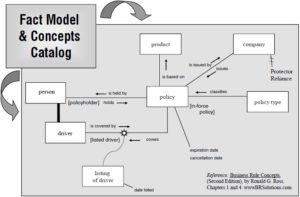We left the analysts and press who focus on financial stuff upstairs in the main lecture hall, and a smaller group of us congregated for a roundtable session with Peter Kurpick and a few other high-level technical people from Software AG. These notes are really disjointed since I was just trying to capture ideas as we went along; I have to say that some of these people really like to hear themselves talk, and most them like to wag their finger admonishingly while they do so.
Kurpick started out the session by talking about how Software AG has a product set that has SOA built in from the philosophy up, whereas many other vendors (like SAP) add it on for marketing purposes; I would say that the other vendors are doing it as much for connectivity as for marketing purposes, but it’s true that it’s not baked into the product in most cases. He didn’t use the phrase “lipstick on a pig”, but he sees that the challenge to the application vendors is that by tacking on a services later, it just serves to expose the weaknesses of their internal architecture when the customer wants to change a fundamental business process.
Frank Kenney of Gartner disagreed, saying that adding services to the applications gives those vendors a good way to sell more into their existing customers, and that most organizations don’t change the basic business processes provided by the application vendors anyway. (Of course, maybe they don’t change them because it’s too difficult to do so.) Most customers just want to buy something that’s pretty close to what they want already, not orchestrate their own ERP and CRM processes from scratch, especially for processes that don’t provide competitive differentiation.
Kurpick responded that many organizations no longer own their entire supply chain, and that having an entire canned process isn’t even an option: you have to be able to orchestrate your business process by picking and choosing functional components.
Ian Finley of AMR Research discussed the impact of SaaS applications and services on this equation: if you can get something as a service at a much lower capital cost, even if it’s only a portion of your entire business process, that has value. Other opinions around the table (from people who didn’t bother to set up their name tent and made some rash assumptions about their own fame) agreed that SaaS was an important part as customers modularize their business processes and look for ways to reuse and outsource components. SaaS and open source both provide a way to have lower up-front costs — important to many organizations that are cutting their budgets — while offering a growth path. Someone from Forrester said that they are seeing four disruptive trends: SaaS, offshore, open source, and SOA. All of these mean taking focus away from the monolithic packaged applications and providing alternative ways to compose your business processes from a number of disparate sources.
What does it mean, however, for customers to move to a distributed architecture that is served by a variety of services, both inside and outside the firewall? Some organizations believe that this means giving up some control of destiny, but Kenney feels that control is an illusion anyway. I tend to agree: how much control do you have over a large ERP vendor’s product direction, and what choices do you have (except stopping upgrades or switching platforms, both painful alternatives) if they go somewhere that you don’t want to go? I think that the illusion of control comes from operational control — you own the iron that it runs on — rather than strategic control, but ultimately that’s not really worth much.
Ron from ZapThink and Beth Gold-Bernstein of ebizQ started a discussion on federation of ESBs, repositories and registries, and how that’s critical for bringing all of this together in a governable environment. Susan Ganeshan (Software AG product management) discussed how their new version of CentraSite addresses some of those issues by providing a common governance platform. Distributed systems are inherently complex because they work on different platforms that may not have been intended to be integrated, and may not have any sort of federated policies around SLAs, for example. Large organizations are drowning in complexity, and the vendors need to help them to reduce complexity or at least shield them from the complexity so that they can get on with their business. SOA can serve that need by helping organizations to change the paradigm by thinking about applications in a completely different way, as a composition of services.
We shifted topics slightly to talk about how companies compete on processes: identifying the processes (or parts thereof) that provide a competitive differentiation. Neil Macehiter of MWD pointed out how critical it is for companies to use common commercial alternatives (whether packaged, SaaS or outsourced) for processes that are the same for everyone in order to drive down costs, and spend the money on the processes that make them unique. However, in this era of mergers and acquisitions, none of this is forever: business processes will change radically when two organizations are brought together, and systems will either be made to work together, or abandoned. Kenney told a story that would have you believe that no one gets fired for waiting to buy IBM or SAP or any of the big players; I think that you might not get fired, but your company might get eaten up by the competition while you’re waiting.
There’s a general impression that SOA is failing; not the general architectural principles, but the way that the market is being sold and serviced now. Large, high-profile projects will not attain their promised ROI; the customers will blame the vendors for selling them products that don’t work; the vendors will blame the customers for being dysfunctional and doing the implementation wrong; the SOA market will crash and burn; some new integration/service-oriented phoenix will rise from the ashes.



